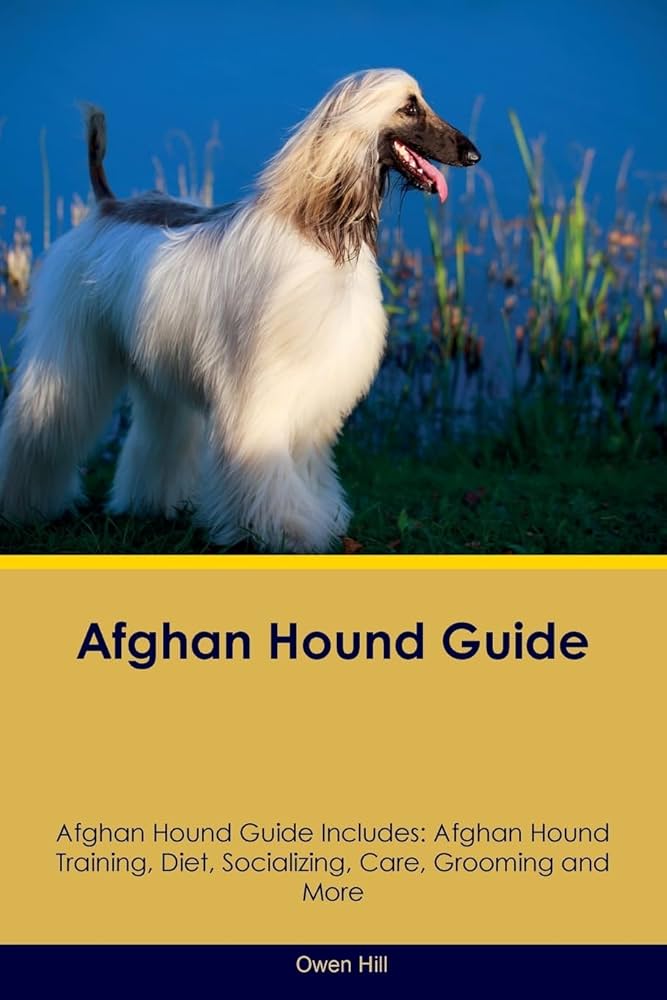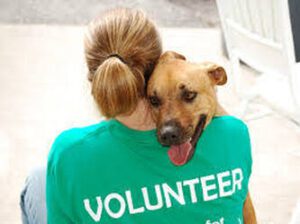Key Takeaways
-
Afghan Hounds are intelligent but can be stubborn, requiring patience and consistency in training.
-
Socializing a rescue Afghan Hound involves gradual exposure to new people and environments.
-
Positive reinforcement is crucial for building trust and encouraging good behavior.
-
Recognizing signs of stress in your dog can help you adjust your socialization strategies.
-
Building a safe and comfortable environment at home is the first step in socialization.
How to Socialize an Afghan Hound
Socializing an Afghan Hound, especially a rescue, can be a challenging yet rewarding experience. These dogs are known for their intelligence and independence, which means they can be both quick learners and stubborn students. To succeed, you’ll need patience, consistency, and a good understanding of their unique traits.

“Afghan Hound Guide Afghan Hound Guide …” from www.amazon.com and used with no modifications.
Understanding Afghan Hounds
Before diving into the socialization process, it’s essential to understand the characteristics and temperament of Afghan Hounds. These dogs are known for their elegance, speed, and aloof nature. They can be reserved with strangers but are affectionate with their family members.
Common Traits of Afghan Hounds
Physical Characteristics
Afghan Hounds are easily recognizable due to their long, silky coat and distinctive appearance. They are medium to large-sized dogs, standing about 25 to 27 inches tall and weighing between 50 to 60 pounds. Their flowing coat requires regular grooming to keep it in top condition.
Typical Temperament
These dogs are known for their independent and sometimes aloof nature. They can be wary of strangers but are usually affectionate and loyal to their family. Afghan Hounds are also known for their high prey drive, which means they may not always get along with smaller animals.
Challenges with Socialization
One of the main challenges in socializing Afghan Hounds is their natural reserve. They may be hesitant or fearful around new people and environments. Additionally, their independent nature can make training more difficult, requiring a consistent and patient approach.
Importance of Socializing Rescue Dogs
Socializing a rescue dog is crucial for their well-being and your peace of mind. Rescue dogs often come from backgrounds of neglect or trauma, making socialization even more critical. It helps them build confidence, reduces anxiety, and improves their overall quality of life. For more tips, check out this guide on how to socialize your adult rescue dog.
Benefits for the Dog
Socialization offers numerous benefits for your Afghan Hound:
-
Reduces fear and anxiety around new people and environments.
-
Improves their ability to interact with other dogs and animals.
-
Enhances their overall confidence and happiness.
“Training an Afghan Hound for competition in obedience can be both a frustrating and rewarding experience. Afghan Hounds are very intelligent and learn quickly what you want them to do, but they often choose not to do it.”
Benefits for the Owner
Socializing your Afghan Hound isn’t just beneficial for them; it also makes your life easier. A well-socialized dog is more predictable, less likely to exhibit problematic behaviors, and more enjoyable to be around. You’ll find it easier to take them to new places, introduce them to new people, and integrate them into various aspects of your life.
Long-Term Behavioral Improvements
Consistent socialization can lead to long-term behavioral improvements. A dog that is comfortable and confident in various situations is less likely to develop behavioral issues such as aggression, fearfulness, or separation anxiety. This makes for a happier, healthier dog and a more harmonious household. Learn more about the benefits of adopting an American Staffordshire Terrier and how socialization plays a crucial role.
Establishing a Comfort Zone
Creating a comfort zone for your Afghan Hound is the first step in successful socialization. This involves setting up a safe and secure environment where your dog feels relaxed and confident. Your home should be a place where your Afghan Hound can retreat to when feeling overwhelmed. For more tips on this, check out this guide on how to socialize your dog.
Start by designating a specific area in your home as your dog’s safe space. This could be a cozy corner in a quiet room, equipped with a comfortable bed, some favorite toys, and maybe a crate with the door left open. This area should be free from loud noises and excessive foot traffic.
Identifying Boundaries
Understanding your dog’s boundaries is crucial. Not all Afghan Hounds will have the same comfort levels, so it’s important to observe and respect their individual limits. Pay attention to how your dog reacts in different situations and adjust your approach accordingly.
Observation of Body Language
“Building a strong foundation with your dog in a place where they feel safe will help them build confidence—and eventually extend that confidence to new places.”
Body language is a key indicator of how your Afghan Hound is feeling. Look for signs such as tail position, ear placement, and overall body posture. A relaxed dog will have a loose body, a wagging tail, and ears in a natural position. Conversely, a stressed dog may have a tucked tail, pinned-back ears, and a stiff body.
For example, if your Afghan Hound is showing signs of stress, such as panting excessively or trying to hide, it might be time to take a step back and give them some space. By closely observing their body language, you can better understand their comfort levels and adjust your socialization efforts accordingly.
Creating a Safe Space
Creating a safe space is essential for your Afghan Hound’s comfort and confidence. This space should be quiet, comfortable, and free from any potential stressors. You can use a crate or a specific room where your dog can retreat to when they need a break.
Fill this area with familiar items such as their bed, toys, and a blanket that smells like you. This will help them feel secure and provide a sense of familiarity. Make sure this space is always accessible to your dog, so they can retreat there whenever they feel overwhelmed.
Techniques for Socializing with Humans
Once your Afghan Hound feels comfortable in their safe space, you can start introducing them to new people. The key is to take things slowly and ensure that each interaction is positive and stress-free. For more tips, you can check out our guide on adopting an American Water Spaniel.
Introducing New People
When introducing your Afghan Hound to new people, it’s important to do so gradually. Start with one person at a time and keep the initial interactions short and positive. Allow your dog to approach the new person at their own pace.
Ask the new person to ignore the dog initially and let the dog make the first move. This helps to reduce any pressure your dog might feel and allows them to approach when they feel comfortable. Encourage the new person to offer treats and speak in a calm, soothing voice.
Using Positive Reinforcement
Positive reinforcement is a powerful tool in socializing your Afghan Hound. Reward your dog with treats, praise, and affection whenever they exhibit calm and friendly behavior around new people. This helps to create positive associations and encourages your dog to repeat the desired behavior.
For instance, if your Afghan Hound remains calm while meeting a new person, give them a treat and lots of praise. Over time, your dog will learn that meeting new people is a positive experience.
Avoiding Forced Interaction
One of the biggest mistakes you can make when socializing your Afghan Hound is forcing interactions. This can lead to increased anxiety and fear, making the socialization process even more challenging. Always allow your dog to approach new people at their own pace. For more tips on adopting and caring for pets, check out our guide on adopting a pet cockatiel.
If your dog shows signs of discomfort or stress, such as backing away, growling, or hiding, it’s important to respect their boundaries and give them space. Pushing your dog too quickly can lead to negative associations and hinder their progress.
Dealing with Behavioral Issues
Despite your best efforts, you may encounter some behavioral issues during the socialization process. It’s important to address these issues promptly and effectively to ensure your Afghan Hound becomes a well-adjusted and confident dog.
Recognizing Signs of Stress
“Different dogs struggle with different aspects of socialization. For some, new places are the problem. Others might love people but have trouble with new dogs—or vice versa.”
Recognizing signs of stress in your Afghan Hound is crucial for successful socialization. Common signs of stress include excessive panting, drooling, trembling, and trying to escape. If you notice any of these signs, it’s important to take a step back and give your dog some time to relax. For more information on adopting different breeds, you can check out our guide on American Water Spaniel adoption.
For example, if your dog starts to tremble and pant when meeting a new person, it’s a clear sign that they are feeling overwhelmed. In such cases, it’s best to remove your dog from the situation and allow them to calm down in their safe space.
Strategies for Reducing Anxiety
There are several strategies you can use to reduce anxiety in your Afghan Hound during socialization. One effective method is desensitization, which involves gradually exposing your dog to the things that cause them anxiety in a controlled and positive manner.
Start by exposing your dog to the anxiety-inducing stimulus at a low intensity and gradually increase the intensity over time. For example, if your dog is anxious around new people, start by having them observe people from a distance and gradually decrease the distance as they become more comfortable. For more detailed steps, you can check out this guide on how to socialize your dog.
Another effective strategy is counter-conditioning, which involves changing your dog’s emotional response to the anxiety-inducing stimulus. This can be done by pairing the stimulus with something positive, such as treats or praise. Over time, your dog will learn to associate the stimulus with positive experiences, reducing their anxiety.
When to Seek Professional Help
While many Afghan Hounds can be successfully socialized with patience and consistency, some may require professional help. If your dog exhibits severe anxiety, aggression, or other behavioral issues that you are unable to manage, it’s important to seek the help of a professional dog trainer or behaviorist.
A professional can provide you with personalized guidance and support, helping you to address your dog’s specific needs and challenges. They can also help you to develop a customized socialization plan that is tailored to your dog’s unique personality and temperament. For more information, you can refer to this guide on how to socialize a dog.
Case Studies of Successful Socialization
Real-life examples can provide valuable insights and inspiration for socializing your Afghan Hound. Here are a few case studies of successful socialization efforts:
Lessons Learned
From the case studies, several key lessons emerge. Firstly, patience is paramount. Afghan Hounds, especially those from rescue backgrounds, may take longer to adjust and feel comfortable around new people and environments. Consistency in training and socialization efforts is also crucial. Repeated positive experiences will gradually build your dog’s confidence and reduce anxiety. For more information on adopting different breeds, you can check out this guide on American Water Spaniel adoption.
Secondly, understanding your dog’s unique personality and boundaries is essential. Every Afghan Hound is different, and what works for one dog may not work for another. Tailoring your approach to meet your dog’s specific needs will yield the best results. For example, some dogs may have similar needs to an American Water Spaniel.
Applying Success Strategies
Based on the lessons learned, here are some actionable strategies you can apply:
-
Take things slow: Gradually introduce your Afghan Hound to new people and environments. Avoid overwhelming them with too much too soon.
-
Use positive reinforcement: Reward your dog with treats, praise, and affection for calm and friendly behavior. This will help create positive associations.
-
Respect their boundaries: Allow your dog to approach new people and situations at their own pace. If they show signs of stress, give them space and time to relax.
-
Create a safe space: Ensure your dog has a designated area where they can retreat to when feeling overwhelmed. This will help them feel secure and confident.
-
Seek professional help if needed: If your dog exhibits severe anxiety or behavioral issues, consult a professional dog trainer or behaviorist for personalized guidance.
Final Insights
Socializing an Afghan Hound, particularly a rescue, is a journey that requires dedication, patience, and a deep understanding of your dog’s needs. The rewards, however, are well worth the effort. A well-socialized Afghan Hound is not only a joy to be around but also a happier and more confident dog. For more information on adopting different pets, you can read about American Water Spaniel adoption.
Consistency is Key
Consistency in your socialization efforts is vital. Regular, positive interactions will help your dog build confidence and reduce anxiety over time. Stick to a routine and ensure that every experience is as positive as possible.
For example, if you introduce your dog to new people every weekend, try to keep the encounters similar in structure and duration. This predictability will help your dog feel more comfortable and less anxious.
-
Regular interactions
-
Positive reinforcement
-
Routine and predictability
Patience and Perseverance
Socializing a rescue Afghan Hound can be a slow process, but patience and perseverance will pay off. Understand that progress may be gradual and there will be setbacks along the way. Stay committed to your dog’s socialization journey and celebrate the small victories.
Celebrate Small Wins
Every step forward, no matter how small, is a victory. Celebrate these moments and use them as motivation to continue your efforts. Whether it’s your dog remaining calm during a brief interaction with a stranger or successfully navigating a new environment, these small wins are significant milestones in their socialization journey.
For instance, if your Afghan Hound allows a new person to pet them without showing signs of stress, reward them with a treat and lots of praise. These positive reinforcements will encourage your dog to continue exhibiting good behavior.
Frequently Asked Questions (FAQ)
What Are Common Challenges When Socializing Afghan Hounds?
Common challenges include their natural reserve and independence, which can make them wary of new people and environments. Additionally, their high prey drive can make interactions with smaller animals difficult. Consistent, positive reinforcement and gradual exposure to new experiences can help overcome these challenges. For more information on adopting similar breeds, check out our guide on American Water Spaniel adoption.


